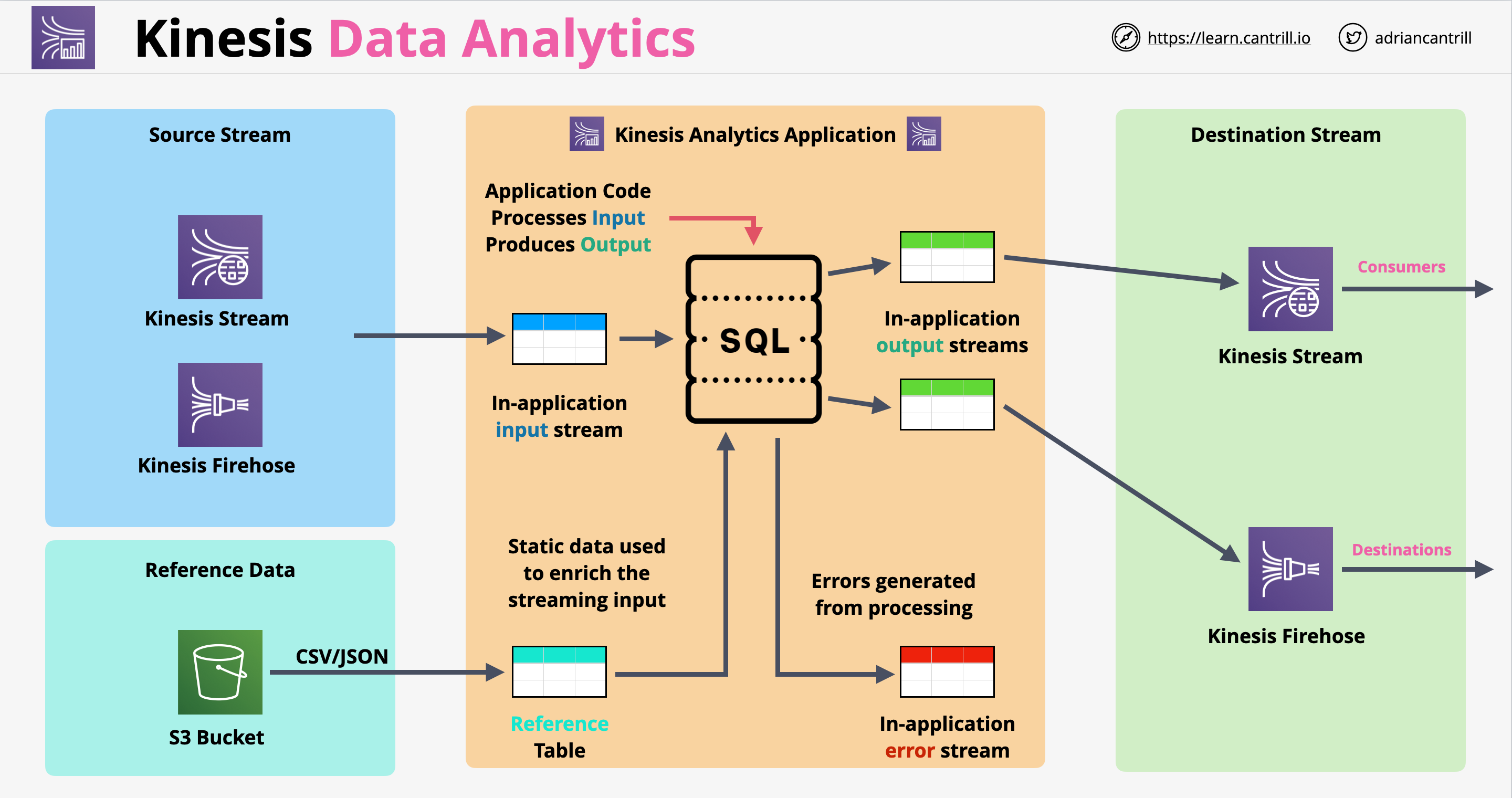Skip to the content.
AWS Solutions Architect – Professional
Kinesis
- Is a scalable streaming service, designed to ingest lots of data
- Producers send data into a Kinesis stream
- Streams can scale from low to near infinite data rates
- It is a public service and it is highly available by design
- Persistence: streams store a 24H moving window of data
- Kinesis include storage to be able to ingest and retain data for 24H
- Multiple consumers can access the data from that moving window
Kinesis Data Streams
- Kineses Data Streams are using shards to stream data, initially there is one shard, additional shards can be added over time to increase performance
- Each shard provides its own performance, each shard has 1MB/s ingestion capacity, 2MB/s consumption capacity
- Shards directly affect the price of the Kinesis stream, we have to pay for each shard
- Pricing is also affected by the length of the storage window. By default is 24H, it can be increased to 7days
- Data is stored in Kinesis Data Records (1MB), these records are distributed across shards
SQS vs Kinesis Data Streams
- Is it about ingestion (Kinesis) of data or about decoupling, worker pools (SQS)
- SQS usually has 1 production group, 1 consumption group
- SQS is designed for decoupling and asynchronous communication
- SQS does not have the concept of persistence, no window for persistence
- Kinesis is designed for huge scale ingestion, having multiple consumers with different rate of consumption
- Kinesis is recommended for ingestion, analytics, monitoring, click streams
Kinesis Data Firehose
- Used to provide data ingestion for other AWS services such as S3
- Fully managed service used to load data for data lakes, data stores and analytics services
- Data Firehose scales automatically, it is serverless and resilient
- It is not a real time product, it is a Near Real Time product with a deliver product of ~60 seconds
- Supports transformation of data on the fly using Lambda. This transformation can add latency
- Firehose is a pay as you go service, we pay per volume of data
- Firehose supported destinations:
- HTTP endpoints
- Splunk
- RedShift
- ElasticSearch
- S3
- Firehose can accept data directly from producers or from Kinesis Data Streams
- Firehose receives the data in real-time, but the ingestion is buffered
- Firehose buffer by default waits for 1MB of data in 60 seconds before delivering to consumer. For higher load, it will deliver every time there is an 1MB chunk of data
- Data is sent directly form Firehose to destination, exception being Redshift, where data is stored in an intermediary S3 bucket
- Firehose use cases:
- Persistence for data coming into Kinesis Data Streams
- Storing data in a different format (ETL)
Kinesis Data Analytics
- It is a real-time data processing product using SQL
- The product ingests data from Kinesis Data Streams or Firehose
- After the data is processed, it can be sent directly to destinations such as:
- Firehose (data becoming near-real time)
- Kinesis Data Streams
- AWS Lambda
- Kinesis Data Analytics architecture:

- Kinesis Data Analytics use cases:
- Anything using stream data which needs real-time SQL processing
- Time-series analytics: election data, e-sports
- Real-time dashboards: leader boards for games
- Real-time metrics
